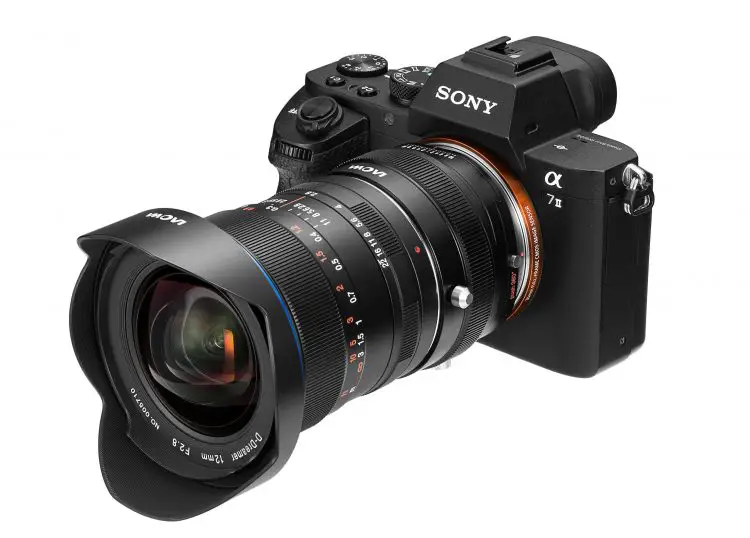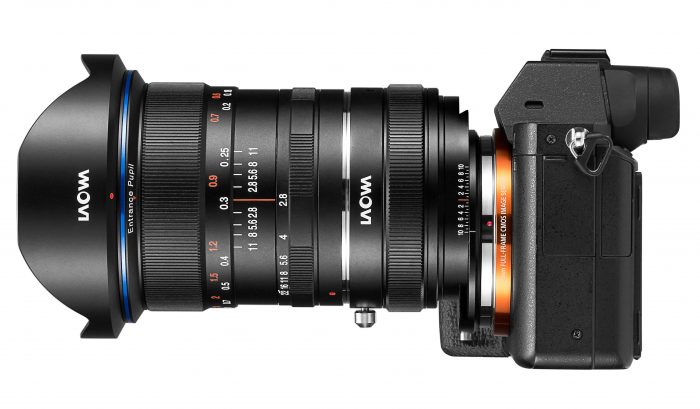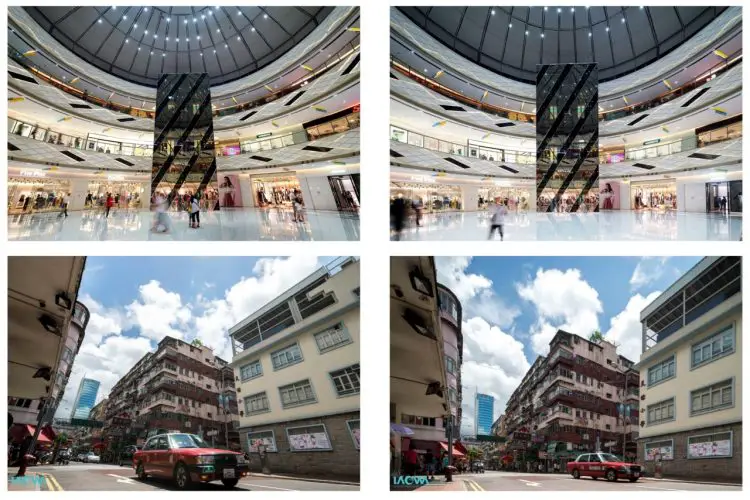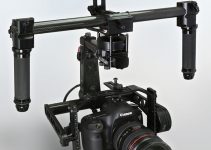Are budget Chinese lens maker Venus Optics becoming the next “Aputure” of lenses? That can only be a good thing, as Aputure make some of the best budget lighting gear on the market. Venus Optics have been getting a lot of traction lately with the Laowa 12mm f/2.8 we told you about in this post here as its Kickstarter campaign managed to meet the target in a split second after it was launched with more than whopping $400K raised. The company is also known for its wide-angle full-frame macro lesnes such as the Laowa 15mm f4 and the super-wide and compact Laowa 7.5mm f2.0, which is sure to please many Panasonic GH5 shooters and DJI Inspire drone operators.
In essence, the Laowa 12mm f/2.8 is currently one of the widest and fastest rectilinear lenses for full-frame cameras available on the market. The lens is available in multiple lens mounts including Canon EF, Nikon AI, Sony A, Pentax K and Sony E mount. The Laowa 12mm f/2.8 offers “close-to-zero” distortion, stunning optical quality and a small and compact form factor.
And now with the new Laowa Magic Shift Converter lens adapter, you can turn this lens into a real gem for architectural photography.

Laowa Magic Shift Converter (MSC) is an adapter specially designed to convert the Canon and Nikon mount versions of the Laowa 12mm f/2.8 Zero-D into a 17mm f/4 +/-10mm Shift lens and use it with the Sony full frame E-mount cameras such as the Sony A7R II or Sony a9. With the Laowa MSC, you can have absolute vertical lines rather than converging lines while shooting. This is a super useful feature in architecture and interior photography.

Laowa Magic Shift Converter (MSC) Specifications
| Lens Structure | 5 elements in 4 groups |
| Focal Length Multiplier | Increase by 1.4x |
| Aperture Impact | Reduce by 1-stop |
| Focus Mode | Manual |
| Dimensions | 69.6 x 44.1mm |
| Weight | about 360g |
| Mounts | Canon EF to Sony E / Nikon AI to Sony E |
The Laowa Magic Shift Converter (MSC) takes advantage of the short flange distance of mirrorless cameras and incorporates a patented optics system into the converter. The patented optical system in the converter, enlarges the image circle of the 12mm f/2.8 Zero-D from 43.2mm to 60mm in diameter and converts it a 17mm f/4 lens with +/- 10mm shift capability.
Check out an example of what this lens adapter can do:

For full size samples head over to Venus Optics here.
The camera can be rotated in a 360 full circle, allowing a quick switch between landscape and portrait framing or to change the shift direction.
The Laowa MSC is available in a Canon EF to Sony E & Nikon AI to Sony E versions. The Canon EF version is priced at $300 US and is currently available to pre-order directly from Venus Optics here, and is expected to start shipping in late July/early Aug 2017. The Nikon AI to Sony E version will be available at some point later.
Disclaimer: As an Amazon Associate partner and participant in B&H and Adorama Affiliate programmes, we earn a small comission from each purchase made through the affiliate links listed above at no additional cost to you.




I’m not sure I like so much the second batch of picture demo (with the red cab), it’s look like the distortion is reversed now!
Still, it’look like a nice option for these who own this lens.
Please someone..Why not try to bypass the optical-zoom of this adapter by pixel-cropping to the equivalent perspective ?
A ) Compose on 42mio pix (A7R2) with Laowa Canon-mount 12mm : BUT such as to keep verticals strait !
B) Don’t disturb this setup at all, and exchange adapter with the shift adapter (shift any place, but at max. for test).
1) Crop down file A to the exact same visual portion you captured with the shift-adapter
(witch extracted the same part of lens-projection so by optically zooming to 42mio.Pix)
2) Down-sample overall surface of file B to match resolution of cropped file A.
3) Up-sample cropped A to match untouched file B.
How do they compare ?
This way, no (overstretched) software-related-vertical-corrections, but simply cropping (with resizing options).
( I would not be surprised file A to be able to be made always look better than any best B. But I dont know !
To artistically compose A with Ts-e 17mm in mind might be unacceptable to some. But what if the technical outcome happens to be better..?)
I have to correct/complement my above proceedure ! !
Because, teleconverter from 12 to 17mm “is equal” to opposite ; Take full-frame 42 mioPix 12mm-perspective circle and crop to a 17mm framing implies résolution becomes smaller than fullframe résolution. So maybe 42mio£/12mm cropped to 17mm gives perhaps 21mio pixel (am not a “math-person”..)
So; in order to place a landscape-mode cropped vision the highest-up to edge of fullframe image-circle; we would have to put camera in portrait mode !
But if “B)-file” (optically shifted) is produced in portrait-mode to begin with, than perhaps indeed; the top (tiny?) part of image could not be included in an A)-file.
Hypothesis (what do You think of it ?) :
“Without shift-adapter the 12mm Laowa can produce the equivalent framing of a shifted 20mm and at half résolution, wilst the Laowa-shiftadaper produces the equivalent of a 17mm -equivalent APSC-camera photo (blown-up to fullframe of equivalent pixel-density)”.
(All framings with unchanged leveling of the camera)
it would be helpful to know how Laowa MSC fares optically with other WA (Canon or Nikon) lenses, other than Laowa’s own 12mm f2.8 Zero-D
whether it’s optical elements negatively impacts image quality, softer corners, chromatic aberrations, vignetting, etc
also, now, Laowa also has a MFC (Magic Format Converter) using same optical elements, for 44×33 medium format usage (minus shift function)
if it turns out optical elements in Laowa MSC+MFC are superb, then it should not negatively impact optics of best WA lenses out there, not just the Laowa 12 Zero-D